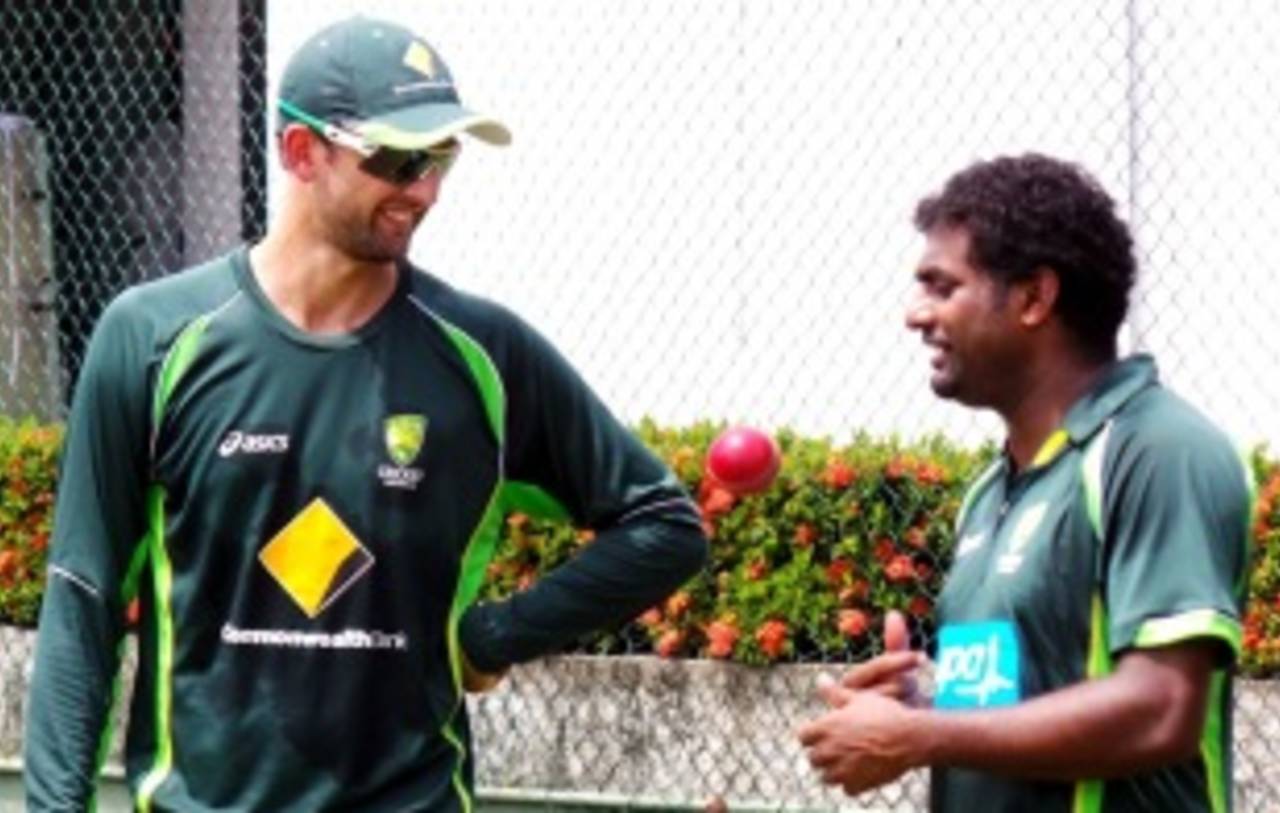Australia are about to face Saeed Ajmal and Pakistan in a Test series. Outside of current international opponents, who might be best placed to educate their batsmen on how to face him and their bowlers on how to emulate him? Why
Muttiah Muralitharan, of course.
Sign him up.
Following the Pakistan assignment, Australia have a Twenty20 series against South Africa at home that begins mere days after the Tests in the UAE conclude. While Darren Lehmann is heading home, who is the best man to mentor the T20 team for this short-term assignment? It would be
hard to go past Trevor Bayliss, the current IPL-holding coach and widely respected overseer at NSW. Let's not, then.
These two decisions seem entirely straightforward and clear examples of Cricket Australia employing common-sense to tackle a problem. It is for precisely that reason they should be applauded, for it has not always been so simple for the game's Australian custodians to look beyond standard practice or past prejudices to reach such sensible conclusions.
In the case of Muralitharan, the "moral question" of doosra bowling and unorthodox spin in general has vexed Australia ever since he was called for throwing by Darrell Hair at the MCG on Boxing Day in 1995. In addition to creating no end of ill-feeling between Australia and Sri Lanka, that episode underlined the nation's scepticism about bowling of a less than orthodox variety.
As recently as 2012, then national selector John Inverarity spoke with some passion about the doosra being a question of "integrity" for Australian cricket, positing the view that coaches at all levels should commit themselves to teaching how to bowl "properly" as a spinner and eschewing the advantages to be gained in a cricket world now permitting up to 15 degrees of elbow flex.
At what was then known as the Centre of Excellence in Brisbane, slow bowling doyens including Ashley Mallett and Terry Jenner had vowed never to allow the doosra to be taught, even as its influence spread around the world. At the same time bowlers were dissuaded from experimenting, batsmen were left to find overseas exposure to the type of spin sorcery they were likely to face in a baggy green cap. George Bailey was certainly in no mood for moral questions when arriving home from a thwarted World T20 campaign two years ago.
"If that's the rules and that's how bowlers are bowling now and having success in international cricket, then we've got to start developing those players and developing them at 10-11 years of age and we start to have some bowlers who do bowl like [Muttiah] Muralitharan or [Saeed] Ajmal or [Sunil] Narine," he said. "You're hoping that a few of our spinners were watching the tournament [World T20] and seeing the type of spinners that were having success."
While the merits of teaching or encouraging the doosra or other lateral variations among spinners will continue to be debated, Muralitharan's hiring for consultancy in Sri Lanka and later this year in the UAE will at least allow Australia's batsmen to face up to Ajmal without feeling entirely unaware of what they might be facing - lessening the chance they will be humbugged in Dubai as England were in 2011-12.
Nathan Lyon, meanwhile, can learn from one of the game's most brilliant spin-bowling minds, even if his arm and wrist can never be expected to contort in the way that allowed his new teacher to pluck 800 wickets. As Australia's captain Michael Clarke noted recently, Ajmal's skill is derived as much from nagging consistency and an agile mind as any variation in spin. Like Muralitharan, Ajmal is also less likely to trouble opponents who seek to understand him rather than huffing and puffing indignant words about his action.
Like Muralitharan, Ajmal is also less likely to trouble opponents who seek to understand him rather than huffing and puffing indignant words about his action
An avowed admirer of Muralitharan during his time with Sri Lanka, Bayliss might likewise have been ignored in earlier years had a stand-in coach been required for duty. Instead of the next best mentor being chosen when John Buchanan, Tim Nielsen or Mickey Arthur took a break, CA commonly chose another assistant such as Troy Cooley or Steve Rixon.
But here can be found a significant sign of progress in relations between CA and the states, at every level from governance to cricket operations. That NSW would allow their senior coach to be whisked away during the domestic season at all is a measure of greatly improved relationships, albeit smoothed by the fact that in Geoff Lawson, the Blues have a more than capable stand-in of their own.
For years, the states and CA would not have been able to pull off such a move, given the considerable scepticism about the national set-up that was demonstrated annually, among other things, by a common reluctance to send each state's best players to the Centre of Excellence. State coaches did occasionally tour with Australia, but never in a senior capacity nor at a time when it might impinge upon domestic plans.
Justin Langer, Stuart Law, Darren Berry, Dan Marsh and Greg Shipperd may all yet gain similar opportunities to work with the national team, allowing both coaches and players to glimpse life on the other side of their chosen existence and learn from the chance. As with the recruitment of Muralitharan, it is good, common-sense thinking. Australian cricket can only gain by pragmatism of this kind.
Daniel Brettig is an assistant editor at ESPNcricinfo. @danbrettig
